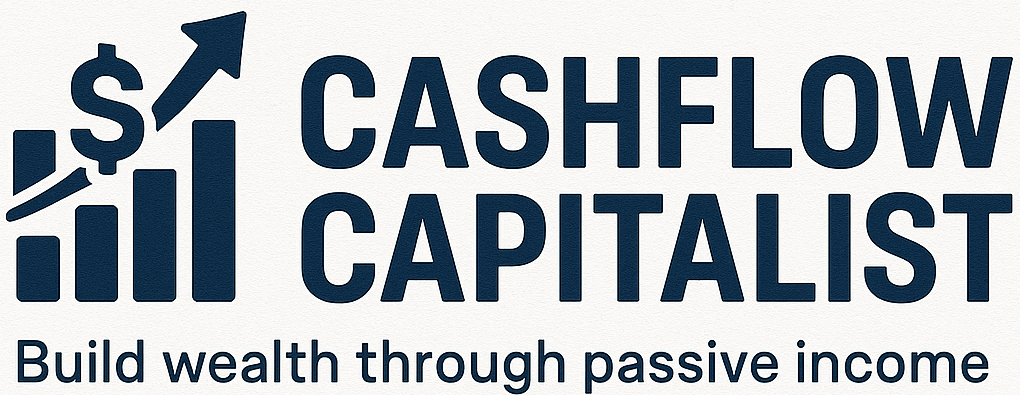The Role of Utilities ETFs (ZUT) in Your Portfolio: Stability, Dividends, and Long-Term Growth
In uncertain markets, some sectors stand firm — and utilities are one of them. The BMO Equal Weight Utilities Index ETF, ticker symbol ZUT, provides stability, steady dividends, and protection when volatility hits. This ETF is designed to offer a conservative yield, currently at 3.41%, and mitigates risk through diversified holdings, making it an attractive option for investors seeking stable income.

For Canadian investors, ZUT presents a compelling opportunity for long-term income growth. As highlighted in a recent analysis on low-risk, high-reward investments for 2025, utility ETFs like ZUT can play a key role in balancing risk and reward in a portfolio. With its equal-weight approach, ZUT ensures a balanced investment in the utilities sector, providing consistent monthly dividends and resilience during market downturns.
Key Takeaways
- ZUT offers a conservative 3.41% yield, providing stable income.
- The ETF mitigates risk through diversified holdings.
- Consistent monthly dividends support long-term income growth.
- ZUT’s equal-weight approach ensures a balanced investment in the utilities sector.
- Utility ETFs like ZUT are suitable for balancing risk and reward in a portfolio.
Understanding Utilities ETFs and Their Market Role
Utilities ETFs are key in the financial markets. They offer a stable investment option. This is because they focus on the utilities sector, known for steady dividends.
What Are Utilities ETFs and Why They Matter
Utilities ETFs, like the BMO Equal Weight Utilities Index ETF (ZUT), track a utilities index. They are important because they help investors diversify. This can lower the risk in a portfolio.
The Defensive Nature of Utilities Investments
The utilities sector is defensive. It offers essential services that people need all the time. This makes utilities ETFs a good choice when markets are shaky. They can be a key part of a recession-proof portfolio.

Essential Services: The Foundation of Utilities Sector Stability
The utilities sector is stable because it provides vital services. These include electricity, gas, and water. These services are always needed, making the sector less affected by economic downturns. So, utilities ETFs like ZUT can provide steady returns, even when markets are tough.
ZUT Utilities ETF: Features, Benefits, and Structure
ZUT is unique because it gives each company an equal share. This is great for the utilities sector, where size doesn’t always matter.
BMO Equal Weight Utilities Index ETF Overview
The BMO Equal Weight Utilities Index ETF (ZUT) tracks the BMO Equal Weight Utilities Index. This index has a mix of utilities companies, all equally weighted. ZUT offers a wide view of the utilities sector, avoiding the influence of any one company.

ZUT’s Top Holdings and Sector Allocation
ZUT’s portfolio includes many Canadian utilities and energy infrastructure companies. It has major players in the Canadian utilities sector.
Canadian Utilities Companies in the Portfolio
Canadian utilities are a big part of ZUT. These companies handle electricity, gas, and water generation, transmission, and distribution.
Energy Infrastructure and Renewable Exposure
ZUT also includes energy infrastructure and renewable energy. This mix could lead to stable returns and growth.
| Company | Sector | Weighting |
|---|---|---|
| Fortis Inc. | Utilities | 8% |
| Enbridge Inc. | Energy Infrastructure | 7.5% |
| Hydro One Ltd. | Utilities | 7% |
Dividend Yield and Distribution History
ZUT has a dividend yield of 4.27%. This makes it appealing to those looking for income. It has a history of steady distributions, providing a reliable income stream.
Management Expense Ratio (MER) and Cost Considerations
The MER of ZUT is something investors should look at. With a low MER, ZUT helps investors keep more of their returns without high costs.
In summary, ZUT’s equal-weight strategy, diverse portfolio, and high dividend yield make it a strong choice for utilities sector exposure.
Analyzing ZUT’s Performance and Risk Characteristics
The ZUT ETF has shown strong growth and resilience. It’s a key part of a well-rounded investment plan. It tracks the utilities sector, which is stable and attractive to investors.
Historical Performance Analysis
The ZUT ETF has stood strong against market downturns. It has grown steadily over time. This is thanks to the utilities sector’s stability, even when the economy is shaky.
Performance During Market Downturns
When markets drop, ZUT ETF often does better than others. For example, in 2020’s market shake-ups, utilities like ZUT kept investors safe from big losses.
Long-Term Growth Trends
Looking at the long haul, ZUT ETF has seen steady growth. This is thanks to the constant need for utilities services. Its diverse holdings also support this growth.

Volatility Metrics and Downside Protection
ZUT ETF is less volatile than the market, making it good for cautious investors. It’s great at protecting against market drops.
Comparing ZUT with Other Utilities ETFs
When we look at ZUT against XUT and HUTS, we see clear differences. These are important for investors to know when choosing.
ZUT vs. XUT: Structure and Performance Differences
ZUT and XUT ETFs differ in how they’re structured. ZUT uses an equal-weight method. This can affect how they perform, mainly during sector changes.
ZUT vs. HUTS: Yield and Growth Comparison
ZUT and HUTS ETFs have different yields and growth rates. ZUT’s equal weighting means a more spread-out yield. HUTS might offer more growth because of its specific investments.
In summary, ZUT ETF’s past performance, risk profile, and benefits make it a solid choice. It’s great for those looking for stability and growth in the utilities sector.
How to Incorporate ZUT into Your Investment Strategy
To add ZUT to your investment plan, first know your financial goals and how much risk you can take. This knowledge helps you decide how much ZUT to include in your portfolio.
Step 1: Determining Your Investment Goals and Risk Tolerance
Start by setting clear investment goals and checking your risk level. Think about what you want to achieve, like income or growth. Then, decide how much risk you’re okay with taking.
Step 2: Calculating the Optimal Allocation for Different Investor Profiles
After setting your goals and risk level, figure out the best ZUT share in your portfolio. Think about your total assets and how much ZUT fits in your mix.
Conservative Investors: Higher Allocation Approach
For those who play it safe, ZUT could be a big part of your portfolio. It’s stable and not too bumpy. Aim for 20% to 40% of your total investments.
Balanced Investors: Moderate Allocation Approach
If you like a mix, ZUT might be 10% to 25% of your portfolio. This gives you some sector exposure while keeping your investments spread out.

Step 3: Implementing ZUT in Registered Accounts
Putting ZUT in accounts like TFSAs and RRSPs can save you on taxes. Each account has its own perks that can boost your investment strategy.
TFSA Strategy: Tax-Free Dividend Growth
Using a TFSA for ZUT means your dividends grow without tax. It’s great for maximizing your returns after taxes.
RRSP Strategy: Long-Term Compounding
RRSPs are good for growing your wealth over time. The tax delay helps your money grow faster.
Step 4: Monitoring and Rebalancing Your Utilities ETF Investments
Keep an eye on your ZUT investments and adjust them as needed. This keeps your portfolio in line with your goals and risk comfort.
When to Increase Your ZUT Allocation
Boost your ZUT share when markets are shaky or interest rates are falling. Utilities ETFs can look more appealing in these times.
When to Reduce Your ZUT Exposure
On the other hand, cut back on ZUT when interest rates rise or the market jumps up. This can help protect you from big losses.
| Investor Profile | Recommended ZUT Allocation | Key Considerations |
|---|---|---|
| Conservative | 20% – 40% | Stable income, lower volatility |
| Balanced | 10% – 25% | Diversified portfolio, moderate risk |
Conclusion: Maximizing the Benefits of ZUT in Your Portfolio
Adding ZUT Utilities ETF to your investment mix can be smart. It’s great for those wanting stable dividend growth and long-term gains.
ZUT provides a steady income stream, acts as a shield against market ups and downs, and has the chance for growth. It’s a good pick for those aiming to boost their portfolio’s stability and earnings.
By putting some of your money into ZUT, you might see less market swings. This could lead to better overall returns and help you reach your long-term goals.
ZUT ETF has a wide range of investments and a solid history. It’s a strong choice for anyone wanting to improve their investment plan and grow their dividends.
FAQ
What is ZUT, and how does it work?
ZUT is the BMO Equal Weight Utilities Index ETF. It tracks the Canadian utilities sector. It holds a diversified portfolio of utilities companies with an equal-weight approach.
What are the benefits of investing in utilities ETFs like ZUT?
Utilities ETFs like ZUT offer stable income and reduced volatility. They are defensive investments. This makes them good for investors seeking consistent returns during market fluctuations.
How does ZUT’s equal-weight approach impact its performance?
ZUT’s equal-weight approach means no single stock dominates. This reduces risk and increases diversification benefits.
What is the dividend yield of ZUT, and how has it performed historically?
ZUT’s dividend yield is competitive. Its distribution history has been stable. This provides a regular income stream for investors.
How does ZUT compare to other utilities ETFs, such as XUT and HUTS?
ZUT, XUT, and HUTS have different structures and strategies. This results in varying performance and yield characteristics. Investors can choose the one that best fits their goals.
What is the management expense ratio (MER) of ZUT, and how does it impact investors?
ZUT’s MER is a critical factor in its overall cost. Investors should consider it when evaluating the ETF’s returns. It’s important when comparing it to other options.
Can ZUT be used in registered accounts, such as TFSAs and RRSPs?
Yes, ZUT can be held in registered accounts like TFSAs and RRSPs. This offers tax benefits and flexibility for investors.
How should investors monitor and rebalance their ZUT investments?
Investors should regularly review their ZUT holdings. Rebalancing their portfolios as needed is important. This ensures their target asset allocation and aligns with their investment objectives.
What are the key advantages of incorporating ZUT into a diversified investment portfolio?
ZUT offers stability, dividend growth, and long-term growth. It’s a valuable addition to a diversified portfolio. It’s great for investors seeking consistent returns and reduced volatility.




